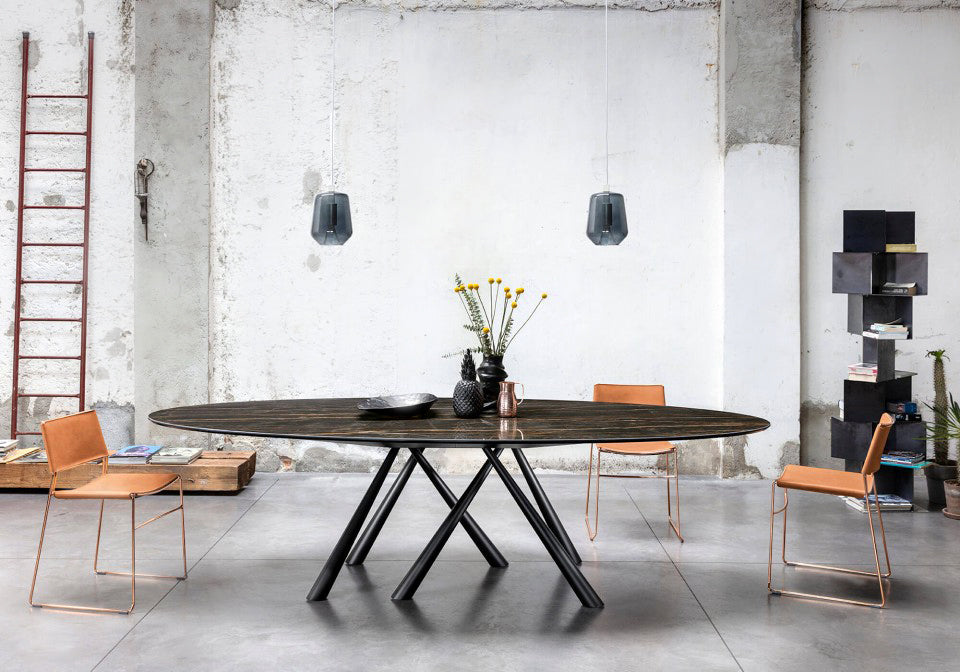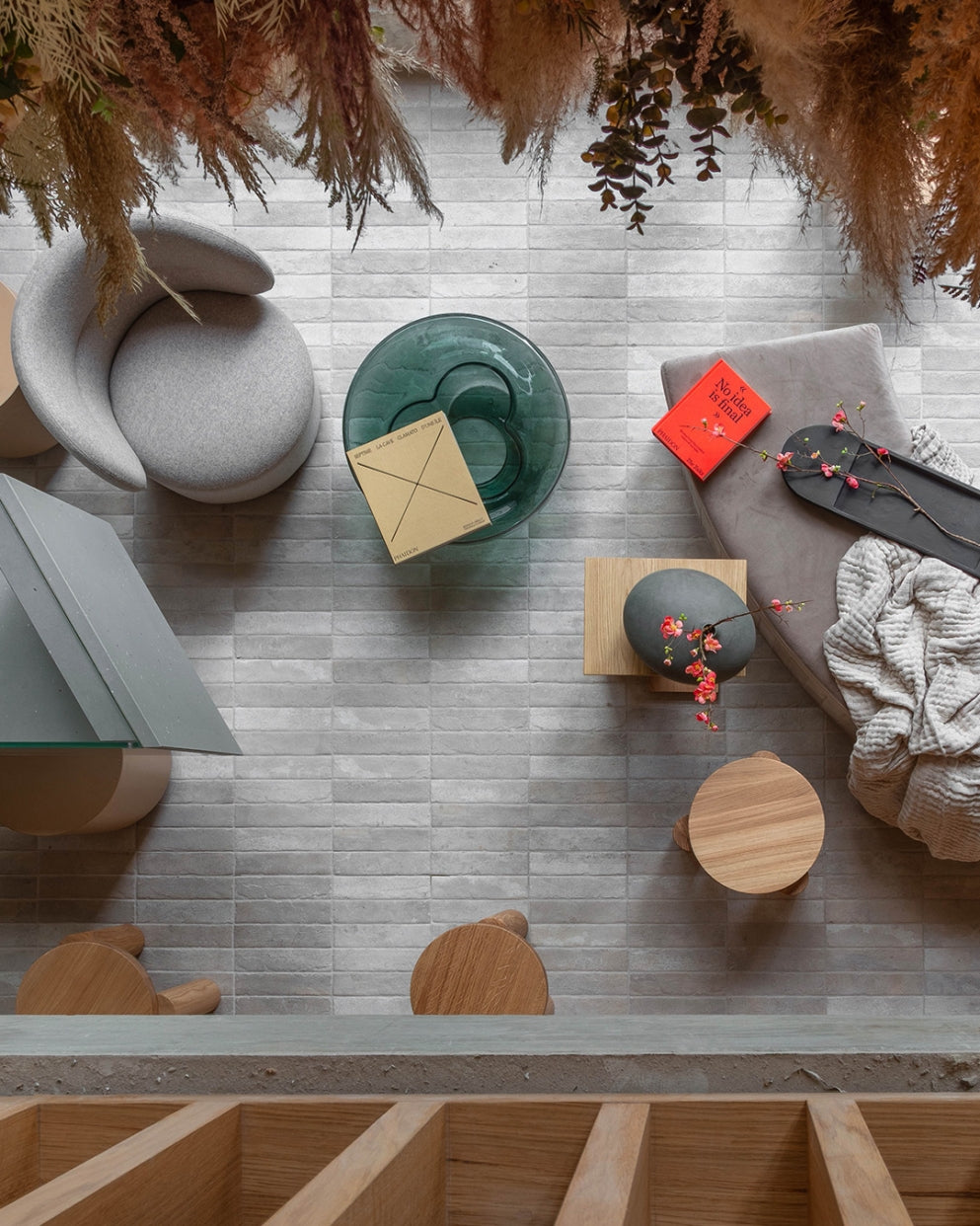
How do I care for my ceramic dining table ?
Elevate Your Dining Experience with a Ceramic Dining Table
How to Clean and Maintain Your Ceramic Dining Table: Tips and Tricks for Longevity
Ceramic dining tables can be a beautiful addition to any home, but they do require proper care to ensure their longevity and continued appearance. Here are some tips for caring for your ceramic dining table:
-
Regular cleaning: Wipe down the table with a damp cloth after each use to remove any spills or food debris. Avoid using abrasive or acidic cleaners, as these can damage the surface.
-
Use placemats and coasters: To prevent scratches and stains, use placemats and coasters under plates, glasses, and other items.
-
Avoid extreme temperatures: Ceramic can crack or warp when exposed to extreme temperatures, so avoid placing hot dishes or pots directly on the table. Use trivets or hot pads to protect the surface.
-
Protect from sunlight: Prolonged exposure to sunlight can cause fading and discoloration, so avoid placing the table in direct sunlight or use window treatments to block UV rays.
-
Repair minor damage: If the table gets chipped or scratched, use a touch-up kit or consult a professional to repair the damage.
-
Store correctly: If you need to move or store the table, make sure to wrap it in a soft material and store it in a dry, temperature-controlled environment.
By following these tips, you can keep your ceramic dining table looking beautiful for years to come.
What NOT to Do When Caring for Your Ceramic Dining Table
While proper care is essential for maintaining the beauty and longevity of your ceramic dining table, it's equally important to be aware of what you should avoid. To safeguard your table's pristine condition, steer clear of the following:
-
Avoid Harsh Cleaners: Refrain from using abrasive or acidic cleaning products, as they can damage the ceramic surface. Stick to gentle, non-abrasive cleaners to keep your table looking its best.
-
Don't Drag Heavy Objects: To prevent scratches, do not drag heavy pots, pans, or dishes across the table's surface. Lift and place items gently to protect against surface damage.
-
Skip Direct Impact: Avoid subjecting your ceramic table to direct impacts or heavy blows, as these can result in chipping or cracking. Use caution when handling hard or heavy objects around the table.
-
Don't Place Hot Items Directly: Ceramic is heat-resistant, but to prevent potential warping or damage, it's best not to place hot dishes or pots directly on the table. Always use trivets or hot pads to shield the surface.
-
Neglecting Spills: Promptly clean up spills and food debris to prevent stains and discoloration. Ignoring spills can lead to long-term damage, so act swiftly to maintain the table's pristine appearance.
By avoiding these common pitfalls, you can ensure that your ceramic dining table remains a beautiful and functional centerpiece of your dining area for years to come.
Pros and Cons: Is a Ceramic Dining Table Right for You
Ceramic dining tables are becoming increasingly popular due to their unique aesthetic, durability, and versatility. However, like any material, they have their pros and cons. Here are some of the key advantages and disadvantages of ceramic dining tables:
Pros:
-
Durability: Ceramic is a tough and hard-wearing material that can withstand regular use and last for many years.
-
Scratch and Stain Resistant: Ceramic surfaces are typically resistant to scratches and stains, making them easy to clean and maintain.
-
Aesthetics: Ceramic tables come in a variety of colors, patterns, and finishes, allowing you to choose the perfect style to complement your decor.
-
Heat Resistant: Ceramic can withstand high temperatures, so you don't have to worry about damage from hot dishes or pots.
-
Eco-friendly: Ceramic is a natural material and is often made from recycled materials, making it an eco-friendly choice.
Cons:
-
Heavy: Ceramic dining tables can be heavy and difficult to move, which may be a concern if you plan to rearrange your furniture frequently.
-
Expensive: Ceramic tables can be more expensive than other materials, such as wood or glass.
-
Fragile: Although ceramic is durable, it can be fragile and susceptible to chipping or cracking if subjected to impact.
-
Limited Designs: While ceramic tables come in many different colors and finishes, the design options are often more limited compared to other materials.
-
Requires Special Care: Ceramic tables require specific care, and abrasive or acidic cleaning products can damage the surface.
Overall, ceramic dining tables are a great choice for those looking for a durable, long-lasting, and aesthetically pleasing table. However, they do require specific care and can be more expensive than other options. Consider these pros and cons when deciding if a ceramic dining table is right for you.
Exploring the Beauty of Ceramic Dining Tables in Various Color Schemes
Ceramic dining tables are a popular choice for their durability and versatility, but it's important to consider the various color options available to make the right choice for your home.
Among the most popular colors for ceramic dining tables are white, beige, gray, and black. Each color can vary in intensity and veining, with some options featuring subtle veining for a more muted look, while others boast more dramatic veins for a bold statement. For example, white ceramic tables can range from pure white to off-white, with some variations featuring delicate gray veining, while others have more intense, contrasting veining that creates a dramatic effect.
Meanwhile, gray and black ceramic tables can vary in shade and intensity, ranging from light to dark and featuring either subtle or prominent veining patterns. With so many options available, it's easy to find a ceramic dining table that complements your existing decor and color scheme.
A Comparison: Ceramic vs. Other Table Materials
When it comes to choosing the perfect dining table, the material it's made from can significantly impact your dining experience and the aesthetics of your home. In this comparison, we'll explore the advantages and disadvantages of ceramic dining tables, pitting them against their wooden, glass, and metal counterparts. By delving into the unique qualities of each material, we aim to equip you with the knowledge you need to make an informed decision, ensuring your dining space reflects your style, durability requirements, and budget.
-
Ceramic:
- Advantages: Durable, scratch and stain-resistant, versatile in terms of design and color options, heat-resistant, and often made from eco-friendly materials.
- Disadvantages: Heavier and more challenging to move, can be more expensive, may require special care, and design options might be somewhat limited.
-
Wood:
- Advantages: Classic and timeless aesthetic, warm and inviting, typically less expensive, and available in various wood types and finishes.
- Disadvantages: Susceptible to scratching and staining, less heat-resistant, and may require periodic maintenance like resealing or refinishing.
-
Glass:
- Advantages: Modern and sleek appearance, easy to clean, visually spacious, and available in various shapes and sizes.
- Disadvantages: Fragile and prone to chipping or cracking, less heat-resistant, limited in terms of design options, and may show fingerprints and smudges.
-
Metal:
- Advantages: Contemporary and industrial look, exceptionally durable, heat-resistant, and often lightweight and easy to move.
- Disadvantages: Prone to scratching and denting, may not suit all interior styles, and can be noisy when items are placed on it.
In the realm of dining table choices, the material you select plays a pivotal role in the overall feel of your dining area. Whether you opt for the timeless warmth of wood, the sleek modernity of glass, the rugged durability of metal, or the versatility of ceramic, each material has its unique strengths and considerations. By weighing the pros and cons of ceramic against these other options, you can confidently choose the dining table that best aligns with your lifestyle, aesthetic preferences, and long-term satisfaction. Ultimately, it's your personal taste and practical needs that should guide your selection, making your dining space an extension of your unique style and personality.
Also explore organic shaped dining tables and extendable dining room tables in many beautiful modern finishes.






